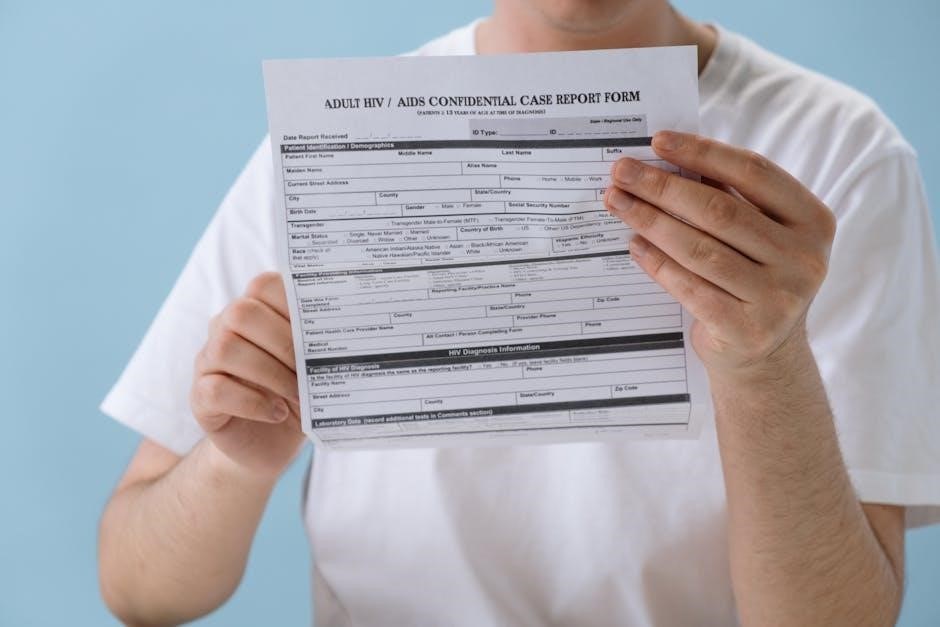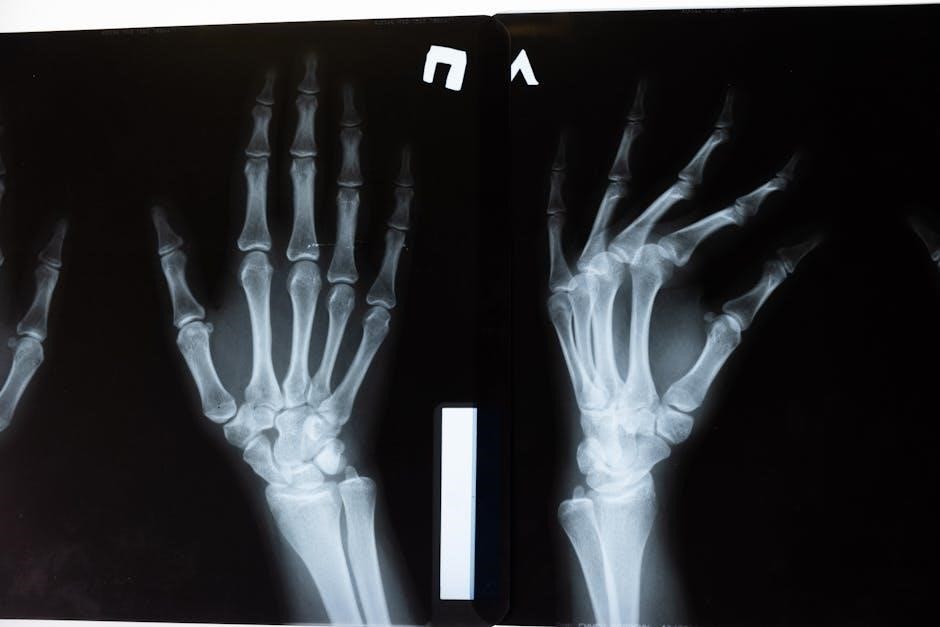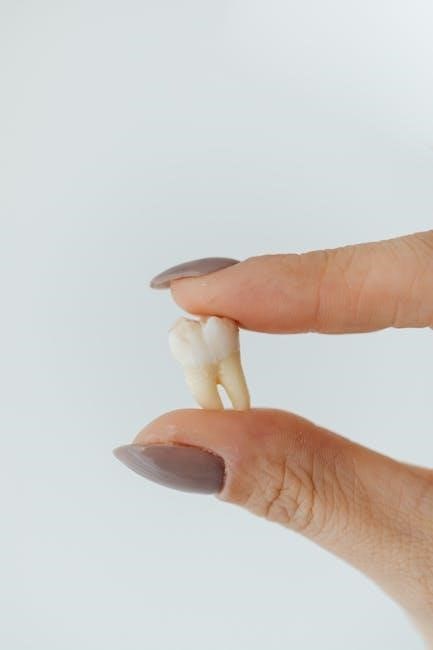Neuroanatomy is the study of the nervous system’s structure‚ essential for understanding brain function and neurological disorders; Neuroanatomy Through Clinical Cases by Blumenfeld offers a case-based approach‚ linking anatomy to real-world scenarios‚ aiding clinicians and students in diagnosing and managing neurological conditions effectively.
1.1 Importance of Neuroanatomy in Clinical Practice

Neuroanatomy is fundamental in clinical practice for diagnosing and managing neurological disorders. Understanding the structure and function of the nervous system enables clinicians to localize lesions‚ interpret symptoms‚ and develop targeted treatments. Books like Neuroanatomy Through Clinical Cases emphasize this by linking anatomical knowledge to real-world patient scenarios‚ enhancing diagnostic accuracy and therapeutic outcomes. This approach fosters clinical reasoning‚ a critical skill for medical professionals. By integrating neuroanatomy with clinical presentation‚ healthcare providers can better understand neurological conditions‚ such as brain injuries or degenerative diseases‚ and improve patient care. Thus‚ neuroanatomy serves as the cornerstone of effective neurological practice and education.
1.2 Overview of the Nervous System
The nervous system is a complex network of specialized cells and tissues that governs voluntary and involuntary body functions. It is divided into the central nervous system (CNS)‚ comprising the brain and spinal cord‚ and the peripheral nervous system (PNS)‚ which includes nerves connecting the CNS to the rest of the body. The CNS processes sensory information‚ controls movement‚ and manages higher cognitive functions. The PNS relays signals between the CNS and peripheral organs‚ enabling responses to stimuli. Understanding the nervous system’s structure and function is crucial for diagnosing and treating neurological disorders‚ as highlighted in resources like Neuroanatomy Through Clinical Cases‚ which uses case studies to illustrate the clinical relevance of neuroanatomical knowledge.

The Clinical Approach to Neuroanatomy
Neuroanatomy Through Clinical Cases emphasizes a practical approach‚ using real-world neurological cases to teach lesion localization and clinical reasoning‚ bridging anatomy with patient care effectively.
2.1 Case-Based Learning in Neuroanatomy
Case-based learning is a powerful method in neuroanatomy‚ allowing students to grasp complex concepts through real-world scenarios. Neuroanatomy Through Clinical Cases exemplifies this approach‚ presenting over 100 clinical cases with neuroradiological images; Each case begins with key symptoms and signs‚ followed by discussions that correlate anatomy with patient presentations. This method enhances clinical reasoning by teaching how to localize lesions and understand their implications. By engaging with actual patient histories and diagnostic images‚ learners develop a practical understanding of neuroanatomy. The book’s focus on linking anatomy to clinical practice makes it an invaluable resource for medical students and clinicians aiming to improve diagnostic skills and patient care.
2.2 Localization of Lesions in the Nervous System
Localization of lesions is a critical skill in neurology‚ enabling clinicians to pinpoint abnormalities within the nervous system. Neuroanatomy Through Clinical Cases emphasizes this process‚ providing detailed case analyses that guide readers through identifying lesion locations based on symptoms. Each case includes neuroradiological images and anatomical correlations‚ illustrating how specific deficits correspond to areas of damage. By systematically analyzing motor‚ sensory‚ and cognitive deficits‚ learners refine their ability to map clinical findings to precise neural structures. This skill is essential for accurate diagnosis and effective treatment‚ making the book a valuable tool for mastering lesion localization in both academic and clinical settings.

Key Concepts in Neuroanatomy
Neuroanatomy Through Clinical Cases introduces key concepts by linking anatomy to clinical scenarios‚ enhancing understanding of brain‚ spinal cord‚ and nerve function through real-world applications and case studies.
3.1 Structure and Function of the Brain and Spinal Cord
The brain and spinal cord form the central nervous system‚ with the brain controlling cognition‚ emotion‚ and voluntary movements‚ while the spinal cord manages reflexes and sensory signals. Neuroanatomy Through Clinical Cases details how these structures function‚ emphasizing clinical relevance. It explores brain regions like the cerebral cortex‚ basal ganglia‚ and brainstem‚ linking their roles to neurological disorders. The spinal cord’s organization‚ including gray and white matter‚ is also examined‚ highlighting its role in motor and sensory pathways. Through case studies‚ the book demonstrates how lesions in specific areas lead to deficits‚ aiding in localization and diagnosis. This approach bridges anatomy with clinical practice‚ enhancing understanding of neurological conditions and their management.
3.2 Cranial Nerves and Their Clinical Significance
Cranial nerves are essential for controlling voluntary and involuntary functions‚ such as smell‚ vision‚ hearing‚ and facial movements. Neuroanatomy Through Clinical Cases highlights their clinical significance‚ discussing how damage to these nerves can lead to deficits like anosmia or diplopia. The book emphasizes the role of cranial nerves in neurologic exams and their localization of lesions. Through case studies‚ it illustrates how nerve dysfunction impacts patients‚ linking anatomy to real-world scenarios. This approach helps clinicians and students understand the nervous system’s intricacies and diagnose conditions effectively. The text also includes neuroradiological images to enhance comprehension of cranial nerve pathology and their clinical correlations.

Neurological Examination and Clinical Reasoning
Neurological Examination and Clinical Reasoning involves systematic assessment of nervous system function. Neuroanatomy Through Clinical Cases provides a case-based guide‚ enhancing diagnostic accuracy and localization of lesions‚ essential for clinical practice.
4.1 The Neurological Exam: A Step-by-Step Guide
A comprehensive neurological exam begins with assessing mental status‚ including cognitive functions like memory and speech. Next‚ cranial nerves are evaluated to check motor and sensory responses. Motor strength‚ reflexes‚ coordination‚ and gait are examined to identify potential pathway lesions. Sensory testing involves assessing touch‚ pain‚ and vibration perception. A thorough history and physical exam guide localization of nervous system disorders. Neuroanatomy Through Clinical Cases provides detailed case studies‚ correlating signs with specific anatomical structures. This structured approach ensures accurate lesion localization and informed clinical decision-making‚ making it a valuable resource for both students and practicing clinicians.
4.2 Clinical Correlation in Neuroanatomy
Clinical correlation in neuroanatomy bridges the gap between anatomical knowledge and practical application‚ enabling precise diagnosis and treatment. By analyzing symptoms and imaging results‚ clinicians can pinpoint lesions to specific neural structures. Neuroanatomy Through Clinical Cases emphasizes this correlation‚ offering real-world examples where symptoms directly reflect anatomical disruptions. This approach enhances understanding of how neural pathways and brain regions contribute to function and dysfunction‚ making it an indispensable tool for integrating neuroanatomy into daily clinical practice and improving patient outcomes through accurate and informed decision-making.

Neuroimaging in Clinical Cases
Neuroimaging‚ including MRI and CT scans‚ plays a pivotal role in identifying lesions and correlating neuroanatomy with clinical presentation. It bridges anatomy and function‚ aiding precise diagnosis and treatment.
5.1 Role of MRI and CT in Neuroanatomy
MRI and CT scans are essential tools in neuroanatomy‚ providing detailed images of brain and spinal cord structures. MRI offers high-resolution images of soft tissues‚ while CT scans are particularly useful for visualizing bones and detecting acute hemorrhages. These imaging modalities help clinicians identify lesions‚ tumors‚ and structural abnormalities‚ correlating neuroanatomy with clinical symptoms. In Neuroanatomy Through Clinical Cases‚ MRI and CT findings are often presented alongside case studies to illustrate how neuroimaging aids in localizing lesions and confirming diagnoses. This integration of imaging with anatomical knowledge enhances understanding and supports precise clinical decision-making‚ making neuroimaging indispensable in modern neurological practice.
5.2 Interpreting Neuroradiological Images
Interpreting neuroradiological images is crucial for correlating neuroanatomy with clinical findings. MRI and CT scans provide detailed views of brain structures‚ aiding in lesion localization and diagnosis. In Neuroanatomy Through Clinical Cases‚ images are analyzed alongside case histories to demonstrate how abnormalities correspond to symptoms. This approach enhances understanding of neuroanatomical relationships and improves diagnostic accuracy. By integrating imaging with clinical data‚ the book offers a practical guide for interpreting scans‚ making it an invaluable resource for both learners and practitioners in neurology and neurosurgery. This systematic correlation of images with anatomical and clinical knowledge ensures precise and effective patient care.

Case Studies in Neuroanatomy
Case studies in neuroanatomy provide real-world examples of brain lesions and their clinical implications‚ enhancing understanding of structure-function relationships and diagnostic skills through practical scenarios.
6.1 Common Neurological Disorders and Their Anatomical Basis
Common neurological disorders‚ such as stroke‚ brain tumors‚ and multiple sclerosis‚ are often linked to specific anatomical structures. Neuroanatomy Through Clinical Cases explores these conditions‚ detailing how lesions in areas like the cerebral cortex or spinal cord lead to distinct symptoms. For instance‚ damage to the motor cortex results in weakness or paralysis‚ while lesions in the cerebellum affect coordination. This approach helps learners correlate clinical presentations with underlying anatomy‚ enhancing diagnostic accuracy. Real patient cases illustrate the practical application of neuroanatomical knowledge‚ making complex concepts accessible for both students and practicing clinicians. This method bridges the gap between theoretical learning and real-world patient care.
6.2 Real-World Examples of Neuroanatomical Lesions
Real-world examples of neuroanatomical lesions‚ such as those presented in Neuroanatomy Through Clinical Cases‚ provide invaluable insights into how structural damage affects nervous system function. Cases involving strokes‚ traumatic brain injuries‚ and spinal cord lesions are meticulously analyzed‚ with accompanying neuroradiological images like MRI and CT scans. These examples demonstrate how lesions in specific brain regions‚ such as the motor cortex or cerebellum‚ correlate with clinical symptoms like paralysis or ataxia. By examining these real-world scenarios‚ learners gain practical understanding of lesion localization and its impact on patient outcomes‚ enhancing their diagnostic and therapeutic reasoning skills in clinical practice.

Resources for Learning Neuroanatomy
Recommended resources include High Yield Neuroanatomy and The NeuroExam Video for practical learning; Online platforms and textbooks like these provide comprehensive‚ concise knowledge for medical students and professionals.
7.1 Recommended Textbooks and Online Resources
For mastering neuroanatomy‚ Neuroanatomy Through Clinical Cases by Blumenfeld is highly recommended‚ offering a case-based approach to learning. High Yield Neuroanatomy is another excellent resource‚ known for its concise and focused content. Online platforms like Sinauer Associates provide The NeuroExam Video‚ a valuable tool for understanding neurological examinations. Additionally‚ comprehensive introductory textbooks designed for medical students are indispensable for building a strong foundation. These resources are widely regarded for their clarity and practical applications‚ making them essential for both students and professionals seeking to deepen their knowledge of neuroanatomy.
7.2 The Role of “Neuroanatomy Through Clinical Cases” by Blumenfeld
Neuroanatomy Through Clinical Cases by Blumenfeld is a groundbreaking textbook that bridges the gap between theoretical neuroanatomy and clinical practice. By presenting real-world neurological cases‚ the book enables students and clinicians to understand how anatomical knowledge translates into diagnosis and treatment. Each case is accompanied by detailed discussions‚ including key symptoms‚ lesion localization‚ and clinical correlations. This approach fosters critical thinking and clinical reasoning skills. The book is particularly praised for its systematic method‚ making complex concepts accessible. It has become a cornerstone resource in neuroanatomy education‚ enhancing the ability to apply anatomical knowledge in practical‚ patient-care scenarios.

Advanced Topics in Neuroanatomy
Advanced neuroanatomy explores neuroplasticity‚ cognitive rehabilitation‚ and ethical research considerations. These topics bridge neuroscience with clinical applications‚ offering deeper insights into brain function and recovery mechanisms.
8.1 Cognitive Rehabilitation and Neuroplasticity
Cognitive rehabilitation focuses on enhancing brain function in individuals with injuries or disorders. Neuroplasticity‚ the brain’s ability to reorganize itself‚ is key to recovery. Clinical cases highlight how targeted therapies promote neural adaptation‚ improving memory‚ language‚ and motor skills. Neuroanatomy Through Clinical Cases provides insights into these processes‚ offering practical strategies for rehabilitation. Understanding neuroplasticity’s role in recovery is essential for clinicians to design effective treatment plans‚ demonstrating the brain’s remarkable capacity for adaptation and repair. This approach bridges neuroanatomy with clinical practice‚ advancing patient care and outcomes in neurological rehabilitation.
8.2 Ethical Considerations in Neuroanatomical Research
Ethical issues in neuroanatomical research involve balancing scientific progress with patient rights. Informed consent‚ privacy‚ and minimizing harm are critical. Neuroanatomy Through Clinical Cases addresses these concerns‚ emphasizing ethical practices in lesion studies. Ensuring anonymity and respecting patient autonomy are paramount. Researchers must also consider the potential societal impacts of their findings‚ avoiding misuse. Ethical guidelines ensure that advancements in neuroanatomy benefit society responsibly‚ fostering trust between clinicians and patients. These principles are essential for maintaining integrity in neuroanatomical studies and clinical applications‚ guiding researchers toward responsible and compassionate scientific practices. Adherence to these standards is vital for the future of neuroanatomical research and its clinical applications.
Neuroanatomy Through Clinical Cases provides a comprehensive learning experience‚ bridging anatomy and clinical practice. It equips learners with essential knowledge for diagnosing and managing neurological disorders‚ emphasizing real-world applications and future advancements in neuroanatomy education and research.
9.1 The Future of Neuroanatomy Education
The future of neuroanatomy education lies in interactive‚ case-based learning tools and digital platforms. Books like Neuroanatomy Through Clinical Cases are paving the way by integrating real-world scenarios with anatomical knowledge. This approach makes learning engaging and clinically relevant. As technology advances‚ neuroimaging and virtual dissection tools will enhance understanding. The systematic study of lesions and their clinical correlations will remain foundational. By bridging anatomy and clinical practice‚ these resources ensure that future clinicians are well-equipped to diagnose and manage neurological disorders effectively. Such innovative methods are transforming neuroanatomy education‚ making it more accessible and practical for students and professionals alike.

9.2 Applying Neuroanatomical Knowledge in Clinical Practice
Applying neuroanatomical knowledge in clinical practice is crucial for accurate diagnosis and treatment. Books like Neuroanatomy Through Clinical Cases emphasize this by linking anatomical structures to symptoms and signs. Clinicians use this knowledge to localize lesions and understand their clinical implications. By correlating patient histories with neuroimaging‚ practitioners can identify patterns and develop targeted therapies. This integration enhances patient care and improves outcomes. The ability to apply neuroanatomical concepts ensures that clinicians can approach complex cases systematically. Such practical application underscores the importance of neuroanatomy in everyday clinical decision-making‚ making it an indispensable tool for all healthcare professionals involved in neurological care.